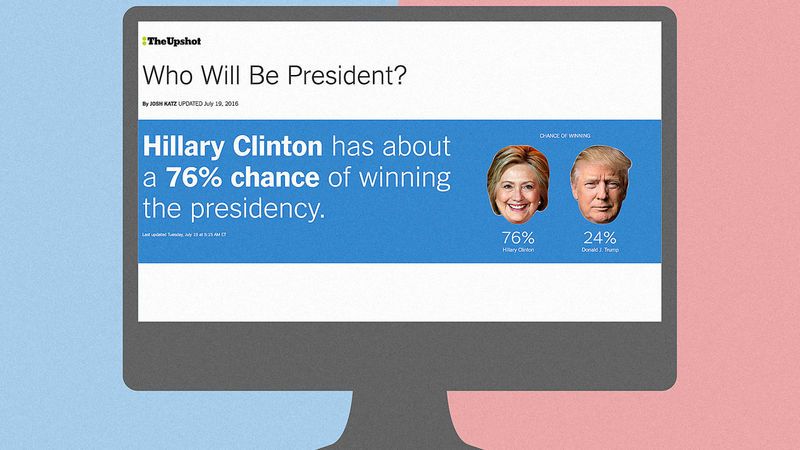
The Upshot Uses Metrics to Present Approachable Election Info
M — July 21, 2016 — Pop Culture
References: nytimes & fastcodesign
The New York Times has put together a webpage designed to be an approachable database for consumers to source election info from that relies on data-driven metrics to simplify understanding the races. The page is known as The Upshot and it provides takeaways, charts and graphs that are easy to digest and comprehend -- no matter the consumer's prior knowledge in politics. The page is ideal for consumers of all backgrounds looking for a reliable source to keep up with the elections.
The Upshot is a presidential predictor that updates in real-time, allowing consumers to check back frequently to keep up-to-date. The page is organized so that the takeaway sits right at the top displaying who has the current greater chance of winning. Then more detailed graphs and data follow suit, for consumers looking to dive deeper into the topic.
The Upshot is a presidential predictor that updates in real-time, allowing consumers to check back frequently to keep up-to-date. The page is organized so that the takeaway sits right at the top displaying who has the current greater chance of winning. Then more detailed graphs and data follow suit, for consumers looking to dive deeper into the topic.
Trend Themes
1. Data-driven Journalism - Opportunities exist to integrate data and technology to offer more approachable and fact-based news to consumers.
2. Real-time Analytics - Incorporating real-time data and analytics could provide valuable information to consumers seeking immediate updates on important events.
3. Simplified Information Presentation - The use of easy-to-digest charts, graphs, and data can make complex information more accessible to a wider audience.
Industry Implications
1. Journalism - News outlets could benefit from adopting data-driven metrics to present complex stories in a more approachable format for consumers.
2. Technology - Innovative technology solutions can support data-driven journalism efforts and make real-time analytics possible.
3. Politics - Politicians and political organizations could use data-driven metrics to communicate current standings and updates in real-time to the general public.
0.3
Score
Popularity
Activity
Freshness























